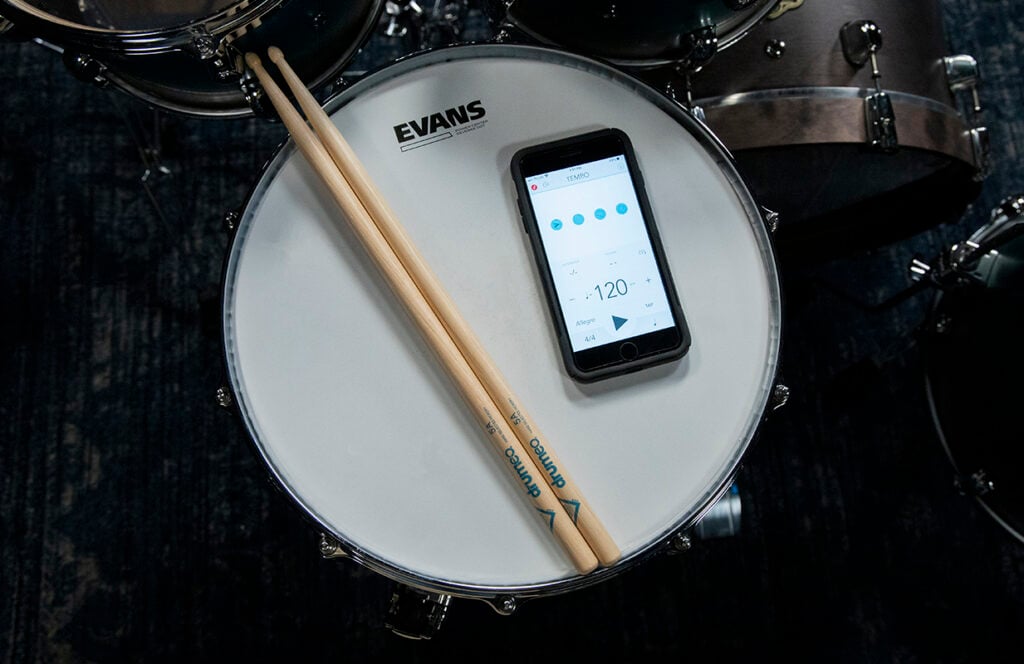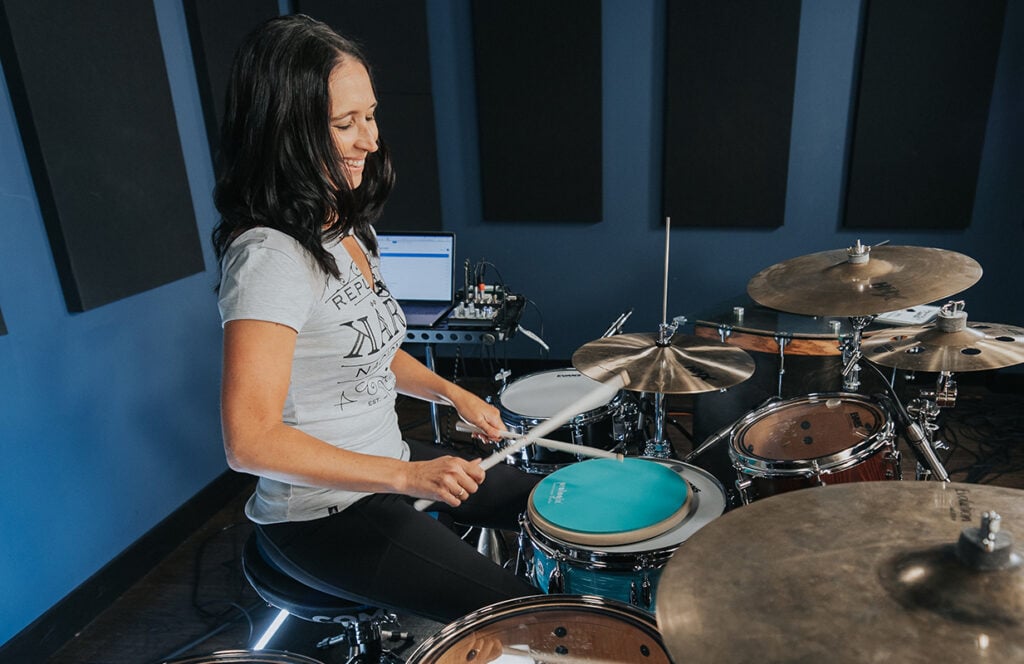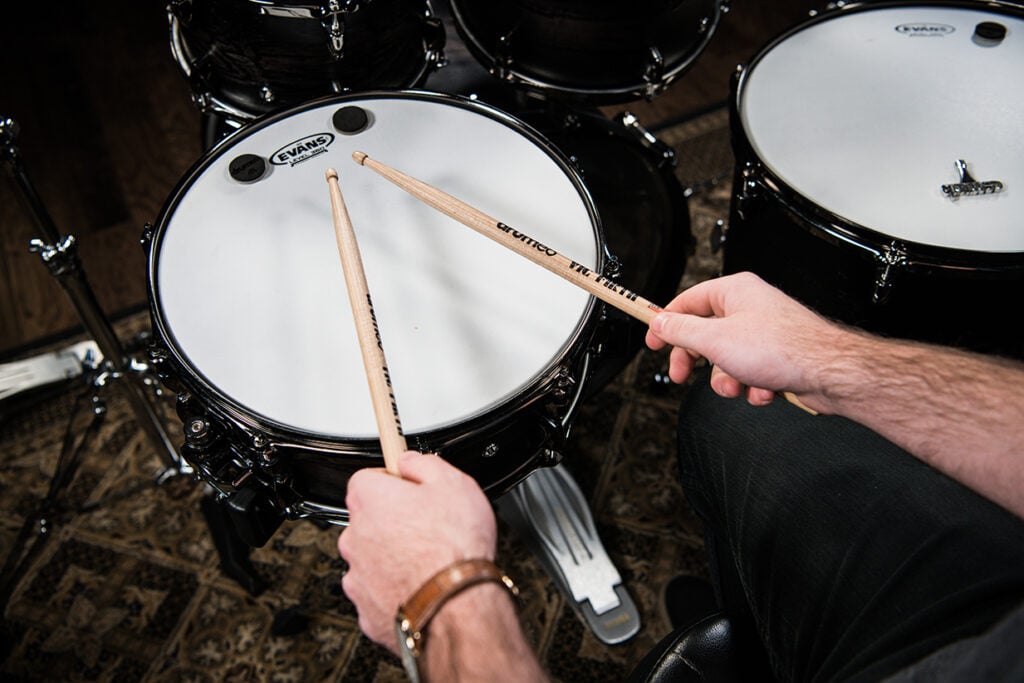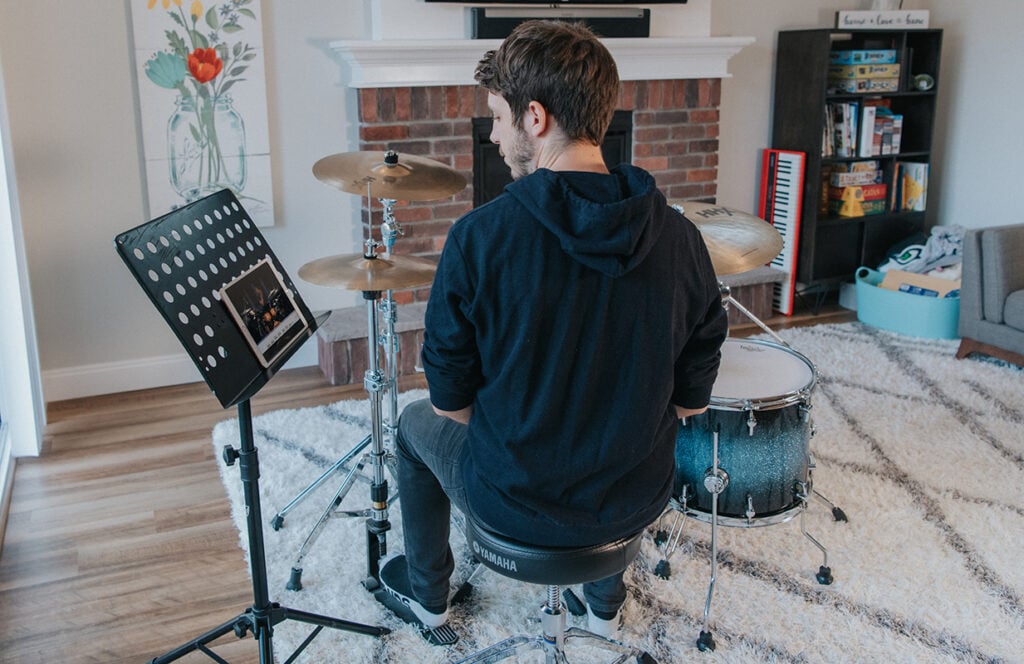The drag (or drag ruff) is a foundational drum rudiment – a building block for all drag-based rudiments. While it might not seem like much on its own, it’s perfect for ghost notes in drum beats or as a lead-in to drum fills.

If you know how to play a flam, you can learn the drag (or ‘drag ruff’). Instead of one grace note leading into a full stroke, the drag has two grace notes – or a light double stroke.
There’s no rhythmic value to a grace note, so it’s up to you to decide how much space you want to leave between that and the primary note (less is better). You may also decide to lead into the full stroke with a buzz rather than two distinct notes.
Drags can be found in ten other rudiments, so you’ll want to get a strong handle on this early.
Here’s what a drag sounds like:
You can use this tool to practice along at the tempo that’s best for you (it’s the one Drumeo members use when practicing with the 3000+ play-along tracks inside our members area).
► Click here if you want to learn how to read drum music
The biggest challenge in mastering this rudiment is distinguishing between the grace notes and the primary note. Make sure to leave very little space between them and keep the drumstick low before playing the grace notes.
The other challenge is getting two clean strokes at low volume. It takes practice!
Here are some tips to help your drags.

When you’re first learning how to play something, it’s fine to test it out without a metronome as you get used to the pattern. But you shouldn’t go click-free for long. The metronome will help you develop a better internal clock and show you exactly where the timing of your strokes is inconsistent (or where it’s right on the grid).
You can buy a physical metronome at a music store or download a metronome app online.

While it might be tempting to get up to speed as quickly as possible – especially if you’re feeling confident – make sure your drag sounds like two separate notes and that your technique is solid.
Be honest with yourself and don’t increase the tempo until you’ve really got it down. Don’t just say “it’s good enough”. Develop control first, and speed will come later.
Try setting your metronome to 60 BPM and play a drag on each quarter note, alternating your lead hand each time. Then slowly work your way up 5 BPM at a time.

If you’re a right-handed drummer, you probably default to starting everything with your right hand. Try starting with your left hand, too. This will help you get a more consistent sound out of both sticks and give you more confidence and control.

It’s easiest to correct your posture or grip immediately if you’re watching yourself in a mirror. Try to set up a practice pad and a snare stand in front of a full length mirror if you can.
You’ll be able to notice if you’re gripping your sticks too hard, or if your stick height doesn’t look right. Use your reflection as a window into how you’re doing. It’s like becoming your own drum teacher!

While playing in front of a mirror will help you fix issues on the fly, you might not realize when something is wrong during your practice session. Sometimes we don’t notice issues while we’re in the middle of playing – especially if we’re concentrating hard.
Whether you’re propping your phone on your dresser or capturing it all with a camera and tripod, it’s helpful to watch your practice sessions and critique yourself from a ‘third party’ perspective.
We’ve put together a playlist with drumless tracks at different tempos so you can practice this rudiment over real music:
Once you’re comfortable playing on a practice pad, try it around the drum set. Here are some exercises to get started.
(As you can see, there are a few different ways to notate a drag. Try to get familiar with all of them.)
#1:
#2:
#3:
#4:
#5:
Learn these tunes to get comfortable with this rudiment in practice:

The drag comes in right at the end of the bar. Keep that hand light!

Just like the previous example, add the drag (or buzz) to the very last note at the end of the bar.

You’ll need a light touch to nail this one.
With enough solid practice, you should start feeling more confident in your playing. Mastering the drag will get you one step closer to meeting your drumming goals.
The next rudiment you should learn is the single drag tap, which builds the drag into an offset double stroke roll. And if you’ve been practicing your flams, you’ll enjoy the flam drag.


By signing up you’ll also receive our ongoing free lessons and special offers. Don’t worry, we value your privacy and you can unsubscribe at any time.
We use cookies for traffic data and advertising. Cookie Policy »